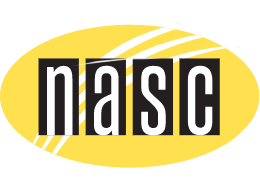Home Remedies For Hot Spots On Dogs

You may think of hot spots as a superficial condition. But most of the time they’re a symptom of a deeper-rooted problem ... like chronic stress, food sensitivities, energy stagnation or liver imbalances.
Known as acute moist dermatitis or pyoderma, the dreaded hot spot should be called the "red, gooey, inflamed, hairless spot varying in symptoms, size and severity" spot.
So what really causes hot spots on dogs and how can you treat them naturally?
What Causes Hot Spots On Dogs?
Some of the most common causes of hot spots are:
- Fleas and other bug bites
- Food sensitivities
- Summer heat
- Environmental allergens
But there are underlying causes too:
- Liver disease and imbalance
- Immune disease
- Injury or instability in the body
- Stress
Hot spots are damp and bring heat and inflammation to the skin. Most hot spots are a result of too much heat in the body … blocking the movement of energy.
Hot spots can appear anywhere. But you'll usually find them in areas where your dog has a weakness in her energy flow. The most common places you’ll see hot spots are ...
- Side of the face
- Neck
- Chest
- Hind end
- Top of the tail
Are Hot Spots Acute Or Chronic?
The conventional view of hot spots is that they’re an acute condition. They’re usually diagnosed as allergens or flea bites. But hot spots on dogs can also be chronic.
Whether acute or chronic, hot spots need immediate attention because they spread fast. They kick out hair and become a sticky, painful, sometimes itchy mess. This can happen in just a few hours.
If your dog's hot spots keep coming back, the cause could be muscle tension, injury or pain. This is common if you find a hot spot on or near the spine. Look for tension near the hot spot moving downward or slightly left or right of the area. With this type of hot spot you might see several hot spots over a short period of time. Your dog may be licking excessively as well.
For these types of hot spots, chiropractic adjustments, acupuncture or acupressure may help. They can clear stagnant energy and bring much-needed circulation to the area.
The Problem With Conventional Treatment
Conventional treatment involves suppressing the symptoms. It usually includes steroids and antibiotics.
Conventional treatment follows the “moist skin lesion standard of care.” This starts off with chemical disinfection, steroids and sometimes antihistamines. Most owners leave the vet's office with oral antibiotics and steroid creams to deal with the hot spot.
But when you give your dog steroids and antibiotics to treat hot spots, these drugs affect the whole body ... and they won't stop the hot spots from coming back. The meds don't treat underlying causes like food sensitivities or a compromised immune system.
So, it's really important to try to get to the bottom of your dog's hot spots, and treat the underlying cause.
Note: There is one exception to this - although it's rare. When a hot spot leads to 40% to 50% of your dog's fur falling out, it's time for a trip to your (preferably holistic) vet. This usually happens with immune-compromised dogs or those with severe thyroid issues.
What To Put On Hot Spots
Here's a 3-step hot spot remedy for dogs, from canine herbalist Rita Hogan.
Step 1
The first step is to treat the hot spot externally to relieve painful symptoms. You want to keep the hot spot from scabbing and avoid bacteria overgrowth.
And herbs are a great natural hot spot treatment. After you secure your dog, gently trim the hair around the area. Then rinse with this mild rinse.
Hot Spot Rinse
- 1/2 tsp Himalayan salt
- 8 ounces boiled, cooled filtered water
- 10 drops crabapple flower essence
- 20 drops Self-Heal( Prunella vulgaris) tincture
- 10 drops echinacea tincture
Optional: replace 4 oz water with witch hazel or rose water for extra drying or cooling support.
Mix the ingredients together, then flush the area or gently mist using a spray bottle, and let dry. Do this 3 or 4 times in the first 24 hours.
Step 2
Next, combine 1/4 cup of powdered bentonite clay with 1/8 cup of powdered echinacea, plantain leaf or yarrow. Bentonite clay is okay by itself if you don’t have the other herbs.
Sprinkle this mixture on the lesion and let it sit for 30 to 45 minutes. Rinse off with tepid water or the Hot Spot Rinse. Do this 2 or 3 times per day.
Step 3
After the hot spot starts healing, you can use a salve made with calendula or St John’s wort oil. Both of these herbs calm the skin, stop the itching, and help support a normal inflammatory response.
Caution: Don't start Step 3 if the hot spot seems infected. If there is still oozing and scabbing, wait until the hot spot has dried out to use the salve.
For Dry Hot Spots
Some hot spots lack moisture and remain dry with limited bacterial growth. For these hot spots you can go straight to Step 3 and apply a simple calendula salve or infused oil to quickly heal tissues and calm the itch.
For painful, dry or healing hot spots use a calendula and goldenseal spray. To make your own spray, add 15 drops of each tincture to one cup of water. Use the mixture to mist your dog’s hot spots 3 to 4 times a day.
Heal Hot Spots From The Inside
It's important to treat hot spots internally as well. There are 3 main areas you want to focus on.
1. Diet
A diet of fresh whole foods is best for your dog's overall health ... and it'll help reduce the likelihood of hot spots.
Make sure your dog's diet includes ...
- Antioxidants
- Digestive enzymes
- Prebiotics and probiotics
- Omega-3 fatty acids
2. Organ Support
You also want to support the elimination organs to help balance out the body. This includes the digestive tract, kidneys and liver.
To support the liver, try milk thistle, dandelion, and St John’s wort. They can help cool your dog’s system as well. For the kidney, use a tincture of whole burdock. This also helps clear out heat and cool your dog from within.
As a general guide, you can give your dog 1/2 drop of tincture for each pound of body weight. Use a full drop if you’re using a glycerin extract instead of an alcohol extract. You can give this to your dog twice daily.
3. Lymphatic System Support
You also need to keep your dog’s lymphatic system moving. Its job is to ...
- Remove toxins and cellular waste
- Transport white blood cells to fight infection
The lymphatic system can also help lower chronic inflammation, often a cause of hot spots.
Choose calendula for dogs who are cool to neutral (dogs who like to lie in the sun or seek out warm cozy spaces). Cleavers work well for dogs who are usually warm or hot ... often the case with dogs who get hot spots. With either herb, use one drop for 10 lbs of bodyweight for lymphatic support.
Suppression Isn't The Answer
The skin is an organ of elimination like the colon, kidneys and liver. Hot spots are the body's way of getting rid of toxins. So suppressing the symptoms should only be a last resort, saved for extreme cases.
Holistic treatments look to ease symptoms and keep hot spots from spreading. Suppressing the body's elimination response can drive inflammation deeper into the tissues. This eventually contributes to chronic disease.
Act Fast To Control Hot Spots
One of the most effective ways to avoid multiple lesions is by being proactive. Don't look at hot spots as a one-off issue. Instead view them as a chronic condition caused by a deeper underlying problem.
If your dog has a tendency to get hot spots, find a holistic vet, herbalist or homeopath to help you. Skin lesions like hot spots are a warning beacon telling you to treat from within. Strengthen your dog’s digestive and immune function while supporting internal organs.
Many natural methods are effective for healing hot spots. The herbal approach above gives your dog relief while allowing her body to respond. If your dog's hot spots are an issue, work on the inside. Support her immune system and get her energy flowing.
Protocol from Rita Hogan, Canine Herbalist and co-founder of Farm Dog Naturals, an herbal remedy company for the all-natural dog. Rita focuses on dogs as individuals: mind, body and spirit. Her practice incorporates herbal medicine, complementary therapies and environmental stewardship to help dogs and people find balance and partnership with nature. Connect with Rita through her website canineherbalist.com




